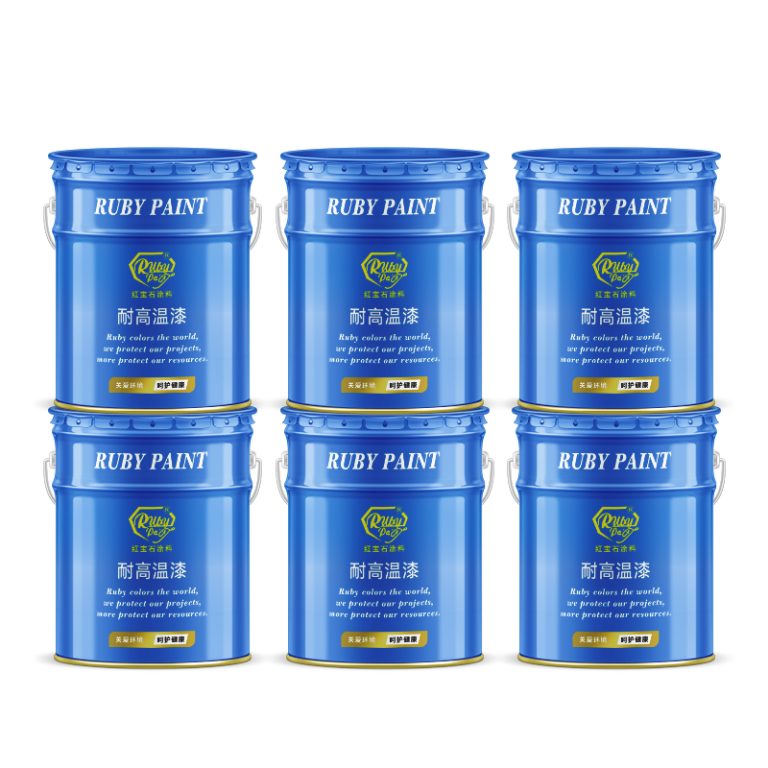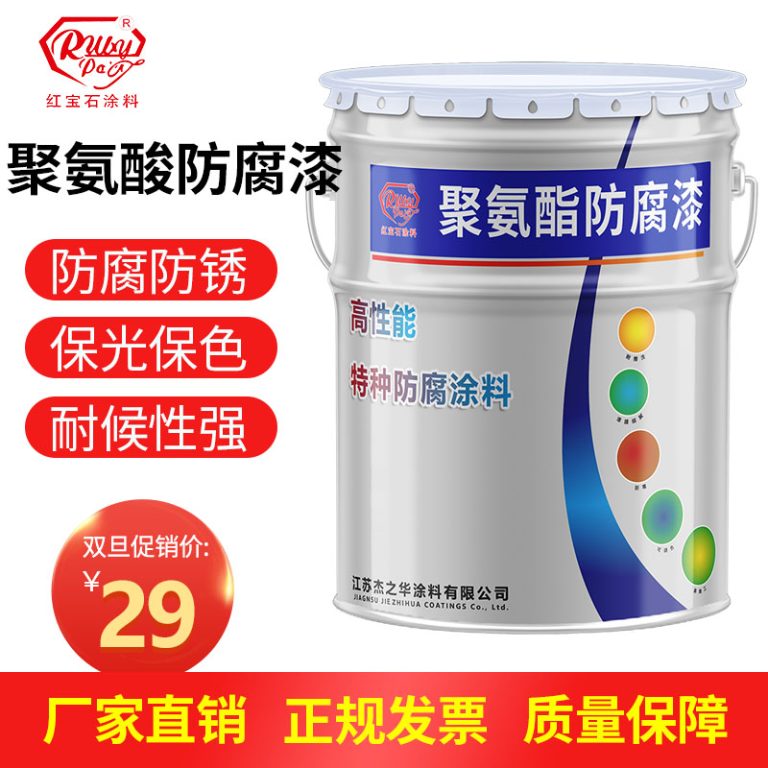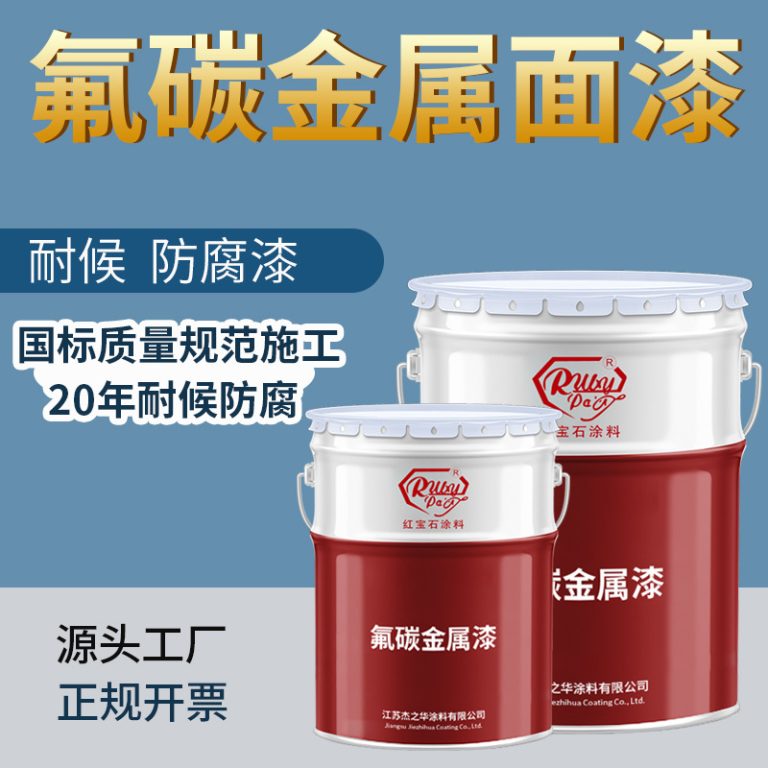Table of Contents
Application Techniques for Epoxy Zinc Rich Paint in Industrial Settings
Epoxy zinc-rich paint is a specialized coating material designed to provide robust protection against corrosion for steel structures in industrial environments. Its formulation, which includes a high concentration of zinc dust, acts as a sacrificial anode to protect the underlying metal surface. When applied correctly, this type of paint forms a durable barrier that can significantly extend the lifespan of industrial equipment and infrastructure. The application of epoxy zinc-rich paint requires meticulous attention to detail and adherence to specific techniques to ensure optimal performance.
The first step in the application process is surface preparation, which is critical for achieving strong adhesion and long-term durability. The steel surface must be thoroughly cleaned to remove any grease, oil, dirt, or other contaminants. This is typically achieved through methods such as solvent cleaning, power tool cleaning, or abrasive blasting. Abrasive blasting is particularly effective as it not only cleans the surface but also provides a suitable profile for the paint to adhere to. The degree of surface preparation is often determined by standards such as those provided by the Society for Protective Coatings (SSPC) or the International Organization for Standardization (ISO).
Once the surface is prepared, the next consideration is the environmental conditions during application. Epoxy zinc-rich paints are sensitive to humidity and temperature, which can affect curing times and the quality of the finish. It is generally recommended to apply the paint in conditions with low humidity and within a temperature range specified by the manufacturer. Deviating from these conditions can lead to improper curing, resulting in a compromised protective layer.
The application of epoxy zinc-rich paint can be performed using various methods, including brush, roller, or spray equipment. Spraying is often preferred in industrial settings due to its efficiency and ability to cover large areas quickly. However, when spraying, it is essential to maintain a consistent distance and angle to the surface to ensure even coverage. Overlapping passes are necessary to avoid thin spots, which could become potential failure points in the protective coating.
The thickness of the paint layer is another critical factor. The manufacturer’s specifications will typically include a recommended dry film thickness (DFT), which must be achieved to ensure proper protection. Insufficient thickness may not provide adequate protection, while excessive thickness can lead to cracking or delamination. To monitor the DFT, specialized gauges are used throughout the application process, allowing for adjustments as needed.
After application, the curing process is the final step to ensure the paint performs as intended. Epoxy coatings require a certain period to fully cure and develop their protective properties. During this time, it is important to protect the coated surface from dust, moisture, and other contaminants that could impair the integrity of the coating.
In conclusion, the successful application of epoxy zinc-rich paint in industrial settings hinges on a series of carefully executed steps. From meticulous surface preparation to precise application techniques and vigilant monitoring of environmental conditions, each stage plays a pivotal role in ensuring the longevity and effectiveness of the protective coating. By adhering to these guidelines, industrial facilities can safeguard their steel structures against the relentless onslaught of corrosion, thereby securing their operational integrity and longevity.
Comparing Epoxy Zinc Rich Paint with Other Anticorrosive Coatings
Epoxy zinc-rich paint stands as a formidable contender in the realm of anticorrosive coatings, offering robust protection for metal structures against the relentless onslaught of corrosion. This type of coating is particularly lauded for its high zinc content, which sacrificially protects the underlying metal by galvanic action. As we delve into the comparative analysis of epoxy zinc-rich paint with other anticorrosive coatings, it becomes evident that each type of coating brings its own set of advantages and limitations to the table, tailored to meet specific environmental conditions and protection requirements.
Traditionally, alkyd-based paints have been used for their ease of application and aesthetic finish. However, when it comes to combating corrosion, epoxy zinc-rich paint outshines alkyd coatings due to its superior adhesion properties and the formation of a barrier that is impervious to moisture and chemicals. The zinc particles within the epoxy matrix act as a sacrificial anode, corroding in place of the steel, thereby extending the life of the metal significantly. This is particularly advantageous in harsh environments where exposure to saltwater or industrial chemicals is a concern.
Transitioning to another popular choice, polyurethane coatings, we find that they offer excellent UV resistance and a glossy finish that is maintained over time. While polyurethane coatings are durable and provide good resistance to abrasion, they lack the self-healing properties of epoxy zinc-rich paints. When the coating is breached, polyurethane does not have the same capacity to prevent rust from spreading beneath the surface. In contrast, the zinc in epoxy coatings electrochemically protects exposed steel, effectively sealing it from further oxidation.
Silicone-based coatings are renowned for their high-temperature resistance, making them suitable for environments where heat resistance is paramount. However, in terms of corrosion protection, they do not compare to the performance of epoxy zinc-rich paints. The latter’s ability to provide cathodic protection means that it continues to safeguard the metal even when the coating is damaged, a feature that silicone coatings lack.
Another alternative is the use of chlorinated rubber paints, which are valued for their quick-drying properties and resistance to water and chemicals. While these coatings are effective in certain scenarios, they do not offer the same level of protection as epoxy zinc-rich paints in environments where the metal is subject to constant wear and tear. The mechanical strength and bond of epoxy coatings ensure that they remain intact even under mechanical stress, providing long-lasting protection.
It is also worth mentioning powder coatings, which are applied as a free-flowing, dry powder and then cured under heat. Powder coatings are environmentally friendly and provide a uniform, durable, and attractive finish. However, they do not inherently contain zinc or other sacrificial elements, meaning they cannot offer the same level of cathodic protection as epoxy zinc-rich paints. For structures that require the highest level of corrosion resistance, the latter is often the preferred choice.
In conclusion, while there are numerous options available for protecting metal from corrosion, epoxy zinc-rich paint distinguishes itself with its exceptional protective qualities. Its ability to provide both passive and active protection through a combination of barrier and cathodic mechanisms positions it as a superior choice for environments where corrosion is a significant threat. The selection of an anticorrosive coating must be made with careful consideration of the specific conditions and requirements of the application, and for many scenarios, epoxy zinc-rich paint will emerge as the optimal solution.
The Role of Epoxy Zinc Rich Paint in Marine Corrosion Protection
Epoxy Zinc Rich Paint: A Vanguard in Marine Corrosion Protection
In the relentless battle against corrosion, particularly within the harsh marine environment, epoxy zinc rich paint emerges as a formidable shield, safeguarding a myriad of structures from the ravages of rust and decay. This specialized coating, infused with finely ground zinc particles, serves as a sacrificial anode, a principle that lies at the heart of its protective prowess. When applied to steel and other metal surfaces, the zinc within the paint galvanically protects the underlying substrate, offering a level of defense that is both robust and enduring.
| No. | Products |
| 1 | Industrial paint |
The marine environment poses a unique set of challenges for metal structures. Saltwater, high humidity, and fluctuating temperatures conspire to accelerate the corrosion process, leading to significant maintenance costs and potential safety hazards. Epoxy zinc rich paint is specifically engineered to withstand these conditions, forming a barrier that not only physically prevents moisture and oxygen from reaching the metal surface but also chemically combats corrosion through the action of zinc.
Upon exposure to the elements, the zinc particles within the paint corrode preferentially to the steel, effectively sacrificing themselves to protect the integrity of the metal. This process, known as cathodic protection, is further enhanced by the epoxy resin matrix that binds the zinc particles together. The epoxy resin provides exceptional adhesion to the metal surface, ensuring that the protective layer remains intact even under mechanical stress or when exposed to UV radiation and temperature variations.
Moreover, the durability of epoxy zinc rich paint is a testament to its superior formulation. Unlike other coatings that may require frequent reapplication, this paint maintains its protective qualities over extended periods, reducing the need for maintenance and the associated costs. This long-term protection is particularly valuable for marine infrastructure such as ships, offshore platforms, and port facilities, where downtime for repairs can be both inconvenient and expensive.
The application of epoxy zinc rich paint is a meticulous process that demands careful surface preparation to achieve optimal results. The metal surface must be free of rust, scale, and contaminants to ensure proper adhesion of the paint. Once applied, the coating must be allowed to cure fully before the structure is put into service. This attention to detail during application pays dividends in the longevity and effectiveness of the corrosion protection provided.
In addition to its protective capabilities, epoxy zinc rich paint also offers aesthetic benefits. It can be top-coated with various finishes to achieve a desired appearance while maintaining its protective properties. This versatility makes it an attractive option for applications where both functionality and visual appeal are important.
| Serial No. | Commodity Name |
| 1 | Epoxy Zinc rich paint |
In conclusion, epoxy zinc rich paint stands as a critical component in the arsenal against marine corrosion. Its ability to provide cathodic protection through the sacrificial action of zinc, coupled with the durability and adhesive properties of the epoxy resin, makes it an invaluable resource for preserving the integrity of metal structures in marine environments. As industries continue to seek cost-effective and reliable solutions to combat corrosion, epoxy zinc rich paint will undoubtedly remain a cornerstone in marine corrosion protection strategies, ensuring the safety and longevity of vital infrastructure for years to come.






